The Most Dangerous Creatures That Could Be Roaming Earth Today
Be Glad They’re Extinct: The Weirdest and Most Dangerous Creatures That Could Prowl the Planet Today
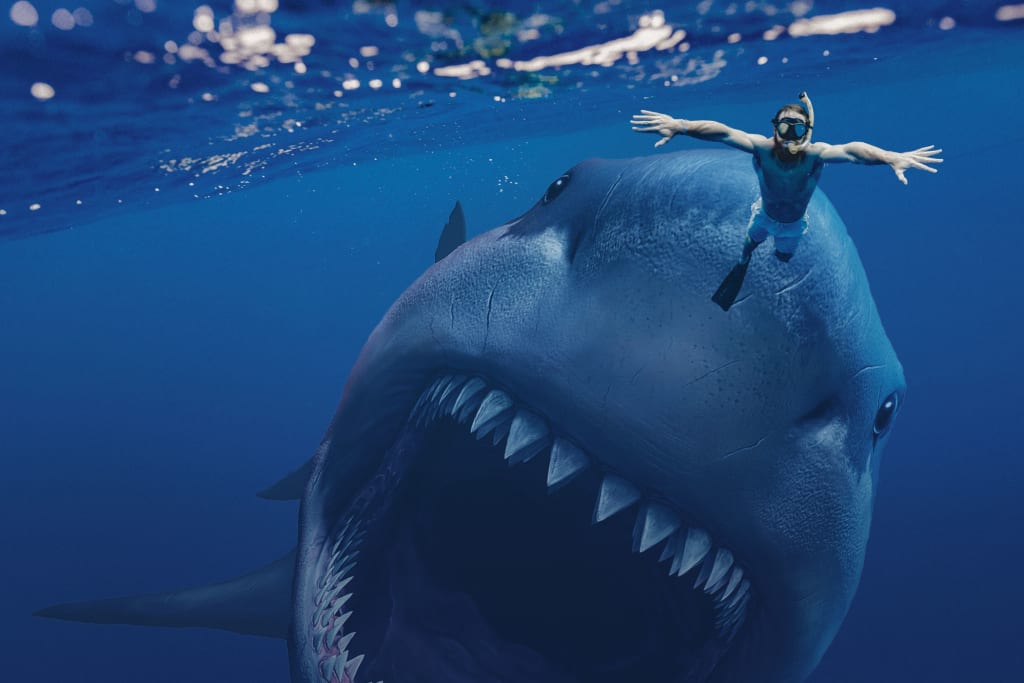
We have some pretty gnarly critters walking the face of the Earth right now, creatures great and small, from the newly terrifying murder hornets to the awe-inspiring blue whale and the oh-so-mysterious giant squid.
But what if we shared our blue marble with some creatures now lost to history? What kind of threat would they pose to our meat-sack bodies and would we be able to fend off their advances when they get an attack of the munchies? (Spoiler alert: Probably no.)
1. Mosasaurus: Like huge Komodo dragons but heavier and scarier with gigantic teeth
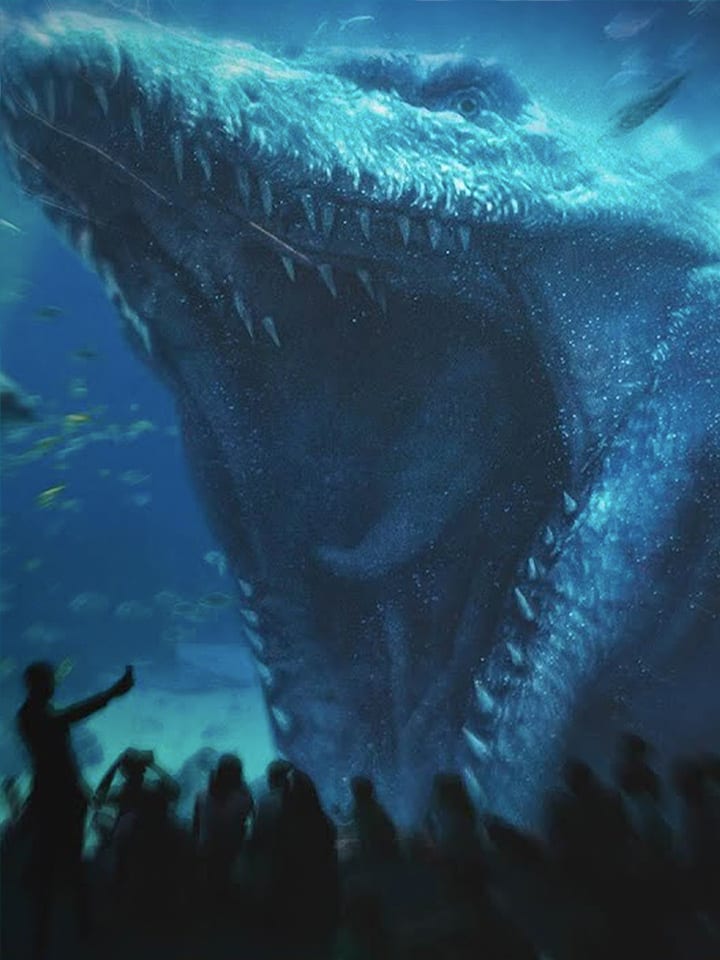
Way back when dinosaurs roamed the Earth, mosasaurs were kind of a mid-range beast. Ranging in size from one meter (three feet) to 15 meters (56 feet) long, mosasaurs were a kind of marine reptile that averaged about four meters (14 feet) long, roughly the size of one of our modern Greyhound buses. Mosasaurs were not light animals, weighing up to 28 tons — three times heavier than a T-rex and five times heavier than a hippo! They lived in colder climates, as evidenced by the specie’s discovery after a tooth was found in the Netherlands. Mosasaurs ate fish, sharks, small whales, dolphins and, just to keep things in order, other mosasaurs when push came to shove. They looked like Komodo dragons but with flippers and paddle-like limbs that allowed them to move deceptively quickly under the water despite their heavy weight; a shark-like tail helped make them super speedy. But there’s a weakness: the mosasaurus had to come up for air every once in a while and had really poor vision despite large eyes.
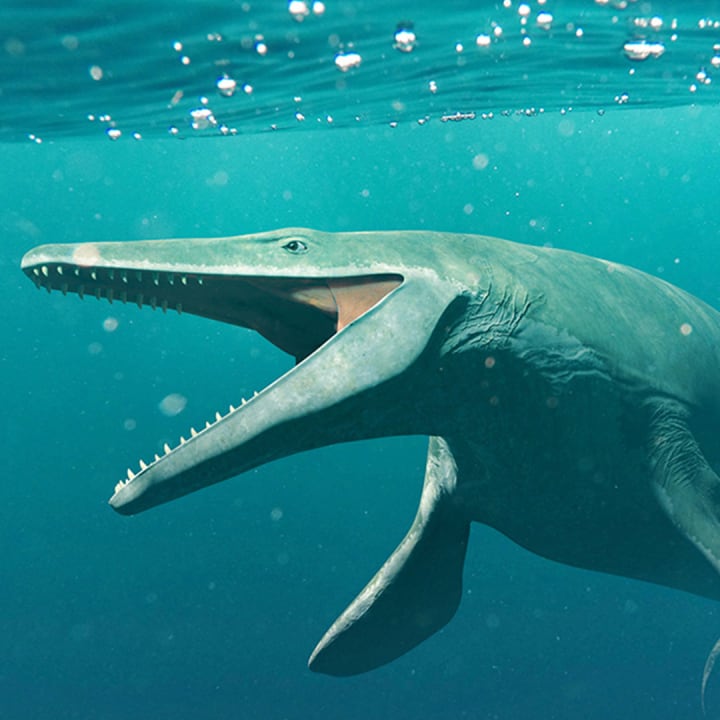
Perhaps the most dangerous thing about mosasaurus is the jaw, and this is why swimming humans wouldn’t stand a chance — they had double-hinged jaws like snakes and incredibly big teeth. Any poor creature trying to get away would likely be snapped, if not in half, then into some kind of painful chunk. Once a mosasaur got hold of something, the two rows of conical teeth would grip its prey tight to pierce it, immobilize it and then swallow it whole. Yikes. No swimming animal, or person, would be safe anywhere near a submerged mosasaurus in the water.
2. Megalodon: Sharks are like kittens by comparison
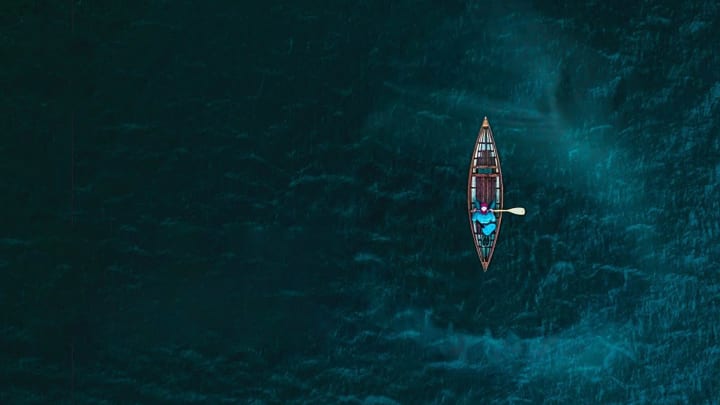
Now that we have you worried about mosasaurs, let’s talk about something even bigger and scarier: the megalodon! It’s a shark on steroids, to put it mildly. For starters, the megalodon was twice the size of a T. rex, measuring between 10 and 18 meters (33 to 59 feet) long, with some believed to stretch up to 25 meters (82 feet) from stubby nose to the tip of their tail. That’s pretty bad, and big. Now let’s talk teeth. Like other animals in the shark lineage, megalodons would have replaced their teeth throughout their lives, never really running the risk of gumming their prey to death. Plus, their teeth were heart-shaped, roughly the size of a human hand, and serrated to allow for better tearing and destruction of their dinner. They were most definitely carnivores. They were also voracious eaters, consuming about 1,100 kg (2,500 lbs) of food daily, which would translate to an even skimpier supply of fresh seafood for us today if they were still around.
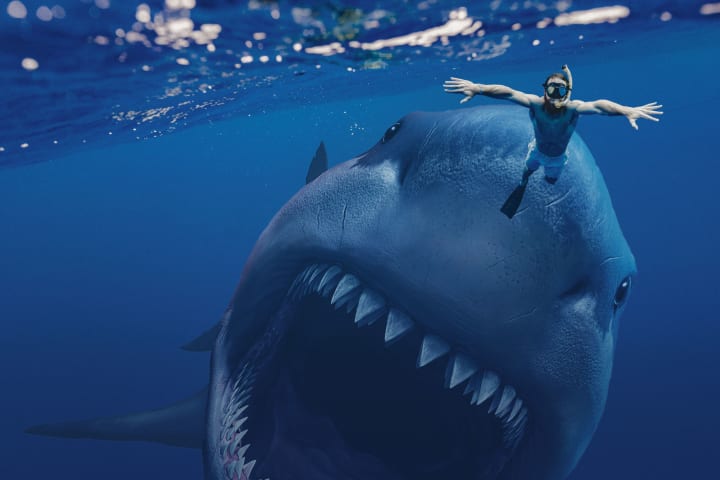
Oh, speaking of that: scientists think the megalodon might’ve died out due to cooling ocean temperatures. Thanks to climate change, our oceans are getting warmer, which means megalodons, if they were to come back (or if they were hiding in the deepest darkest parts of the sea warmed by geothermal jets, as some conspiracy theorists have suggested), would be thriving in our warming waters. Great! We’ve helped create a perfect environment for a killing machine that makes the great white shark look like a guppy. Favoring warmer water also means they’d likely frequent the same areas people like: sunny, warm resort beaches filled with sea critters and lots of human legs to munch.
3. Terror Birds: The name says it all
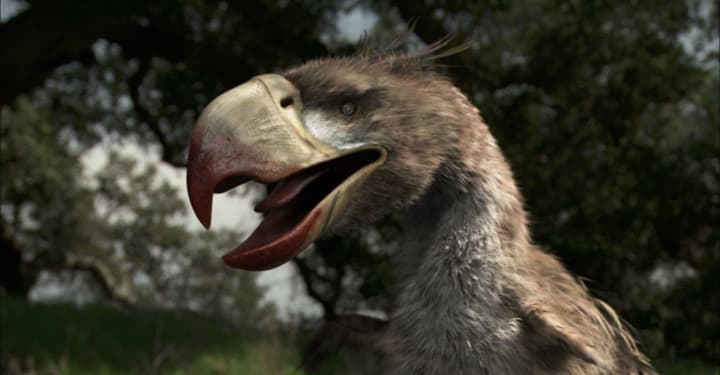
There are some people who are afraid of regular, ordinary, everyday birds like finches, cardinals, bluejays, even sparrows and orioles. They usually have a good reason for being freaked out by the closest living relatives to some kinds of dinosaurs, usually a bad run-in with our usually feathered friends. But if any species of the terror bird family were to nest in our trees, we’d all develop a severe case of ornithophobia and run screaming like Tippi Hedren in The Birds. They had feet like a T. rex and a hooked beak that could fell a horse in a single swoop, severing its spine with just one nip. Terror birds were flightless, but they didn’t really need the power of flying to scare the crap out of other animals: they were about 2.5 meters (8 feet) tall, about half the height of a giraffe, and weighed about 136 kg (300 pounds), about the same as a baby elephant or gorilla. Its wings had claws, in addition to the aforementioned T. rex-like feet.
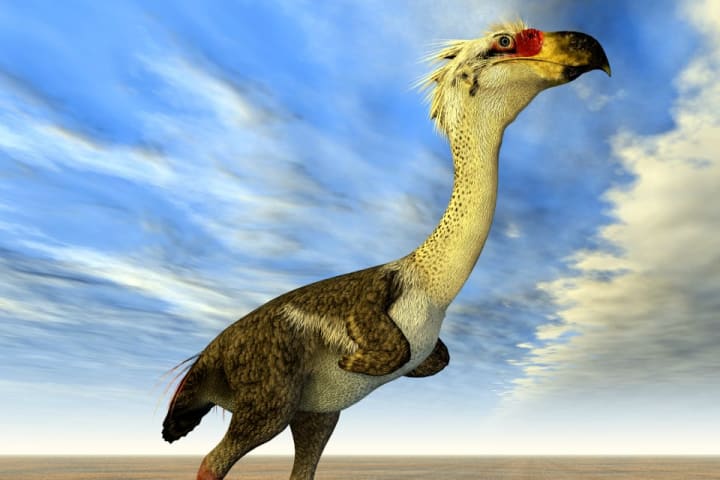
They were big fans of snacking on small mammals — and by comparison, we’re ALL small mammals. The inability to fly wasn’t holding a terror bird back, either, as they could run at speeds of 56 km per hour (35 mph), about as fast as a deer. While our house cats are considered the biggest threat to birds these days and are known to play with their unlucky mouse and bird victims, terror birds are believed to have captured their prey, holding it down with those spiky talons, clench the body between its massive jaws and repeatedly bash it against the ground. When things were good and dead, the terror bird would casually snack on the carcass. Who would rush a terror bird to eat faster?!
4. Dunkleosteus: Cross a massive angry turtle with a huge anglerfish and try to ever sleep again
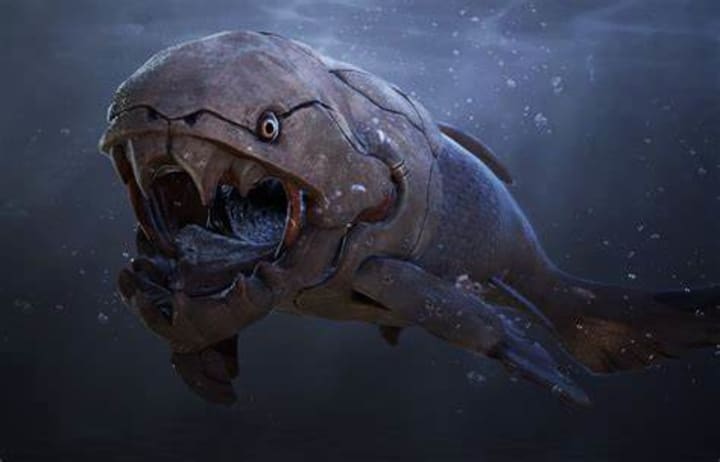
Most of us have heard of piranhas, the small and ravenously hungry fish with razor-sharp teeth. Some are familiar with the pacu, a slightly bigger fish with human-like teeth that can rip flesh. But let’s go beyond that. Think of a big snapping turtle, the grey, dinosaur-looking animals that could, in theory, bite off a finger with a single nip. Now combine that with an anglerfish, the one with the massive underbite that shows off needle-like teeth, distorted face, buggy eyes and a bioluminescent lure hanging over its really ugly mug. That, dear reader, was the dunkleosteus. The moniker means “Dunkles Bone,” named in part for the paleontologist who discovered it, David Dunkle, and the Greek word for bone, as the creature’s head and jaws are covered by heavy bony plates.
Dunkleosteus ranged in size from 4.6 meters (15 feet), about as tall as the average giraffe, to 6 meters (19.6 feet) in length, about as long as the largest hippopotamuses, and — this is fun — the upper and lower jaws could shear against each other, allowing it to self-sharpen. The fish was capable of opening those death machines quickly, creating some suction, meaning its prey never had a chance. And the force of those jaws? On par with giant crocodiles, about 4,400 N (989 pounds) on the cusp to 5,300 N (1,200 pounds) on the end of the blade of its massive mouth. Put another way, it could easily bite through any kind of animal, living or dead, that crossed its path.
5. Giant Sloth: Killing you very, very slowly
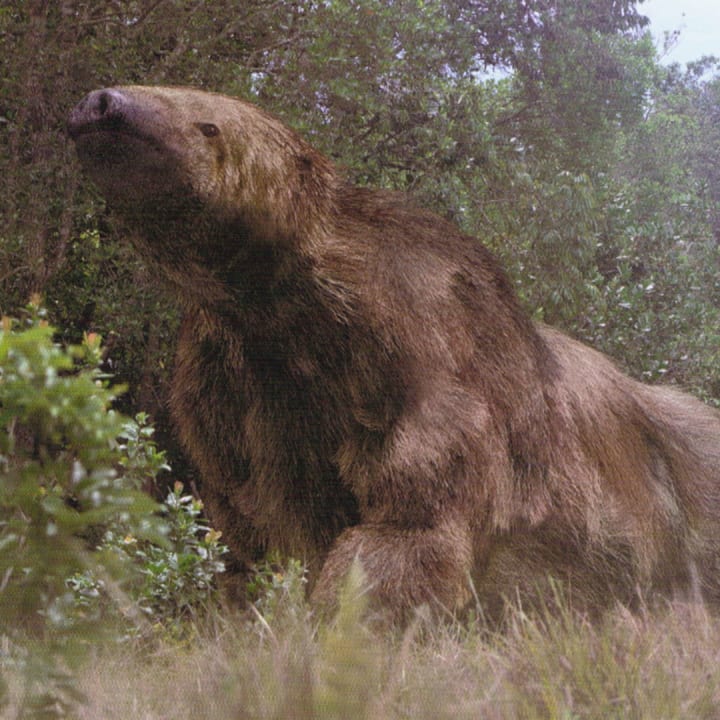
Sloths, as we know them today, are not scary. They’re adorable. They have those big, broad faces, sleepy eyes and move incredibly slowly. The only threatening thing about them are those massive claws used to hold fast to trees and pull off leaves for snacks. Giant sloths, of which there were a few varieties, wouldn’t be all that different from their modern ancestors, but their size alone might make them a slow-moving crushing machine. The largest variety of now-extinct sloth would stand about seven meters (23 feet) tall and weigh about 15,432 kg (7 tons). But ancient sloths, like the ones we know and want to cuddle, are vegan, meaning humans would not be on their menu. But beware, hipsters: They love avocados. More than you. And they would eat WAY more than a Brooklyn coffee shop filled with man-bun-adorned bearded dudes at brunch — to the tune of each one eating up to 200 avocados a day! If there were 80,000 giant sloths on the planet right now, they’d eat as many avocados every year as are consumed by the entire population of the United States.
Holy guacamole indeed. Which means avocados would become more expensive. So even fewer millennials would be able to buy houses (that was the argument, right?). Avocados and leaves would be a big part of a giant sloth’s need for about 60,000 calories each day — just a little less than an African elephant and about 30 times what humans are encouraged to consume. While these giants would most likely be gentle, would you want to see a massive, slow-moving hairball coming toward you, gradually knocking over trees as they tried to take a nap or lazily crushing people under their massive feet? Maybe a world in which the avocado supply is threatened is the real threat here.
And just when you thought it was safe to go outside! Or to sleep! The good news is, these creatures are long extinct and pose no threat to us now. We don’t have to worry about them crushing us, turning us into their beach-day snacks or trampling us underfoot while eating all the avocados.







Comments
There are no comments for this story
Be the first to respond and start the conversation.